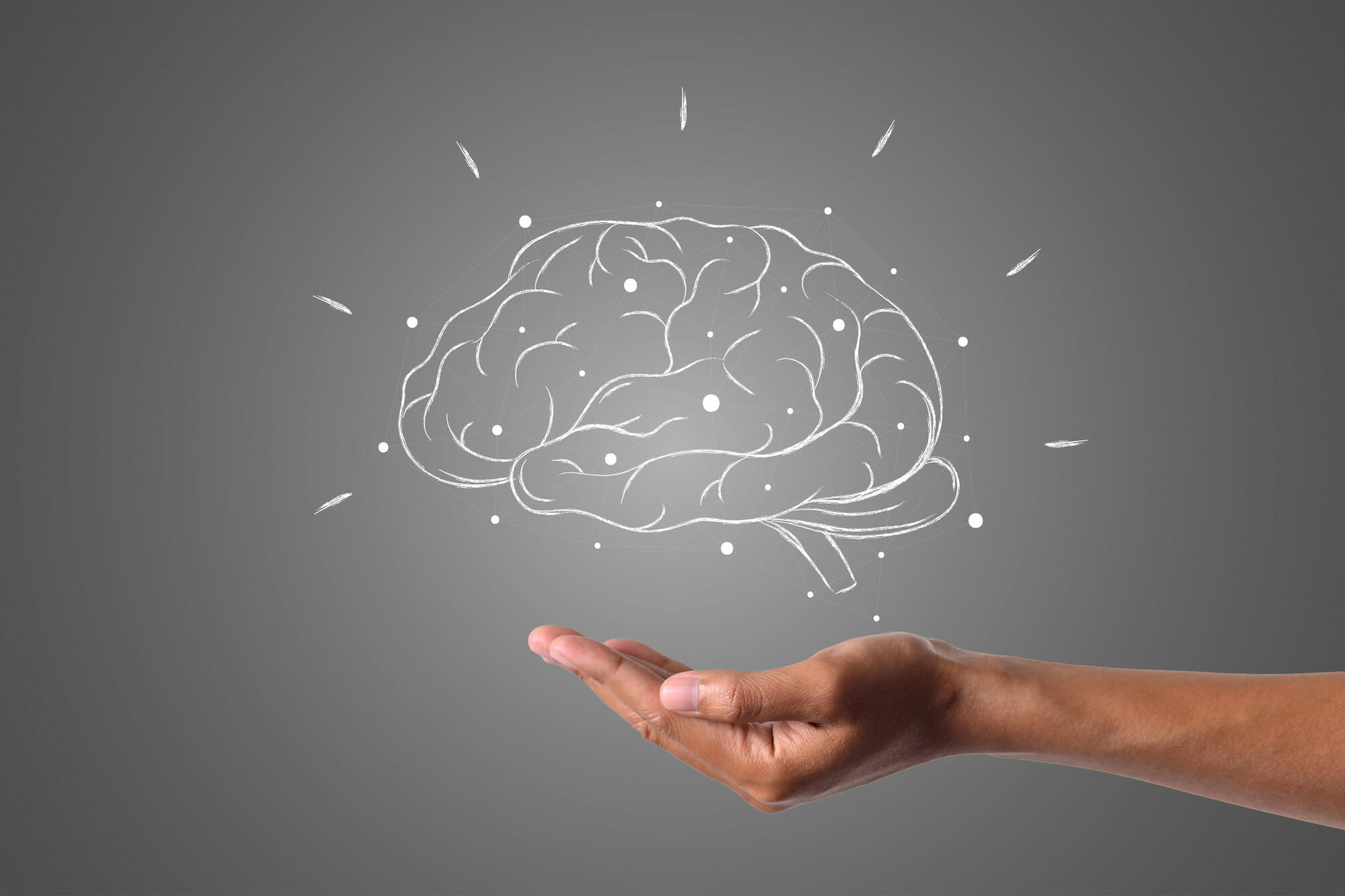10 Innovative Milestones and Advances in Anti-Aging Research 2023
Medical innovations open up new perspectives for quality of life and longevity

CDC
There is no question that aging is inexorably linked to life. But from when and, above all, how this takes place, employs more and more scientists. In 2023, research focused on ways to enable a longer and healthier life. Here are the most important anti-aging reports published over the year in our Science News were published.
Even though much of the anti-aging research this year was aimed at developing treatments that could slow down or even reverse the effects of aging, some studies focused on Methods that are easier to use, but no less effective are.
1. Calorie restriction for healthy aging
One of these studies showed that a moderate 12% reduction in daily calorie intake is sufficient to activate numerous biological pathways associated with healthy aging. The researchers observed that these calorie reduction which gene expression significantly altered genes, in particular those of genes associated with inflammation, a key factor in the aging process.
Why is that important? Research shows that moderately reducing daily calorie intake can activate pathways that enable healthy aging.
2. The 12 signs of aging
In a significant study From 2013, researchers described nine key factors that contribute to aging, the so-called Hallmarks of Aging. Now, after a decade of intensive research, they've updated this list by adding new factors such as deactivated macroautophagy, chronic inflammation, and dysbiosis. Here is a brief explanation of these terms:
Deactivated Macroautophagy: This is the case when cells have difficulty getting rid of damaged parts, which impairs their function and may contribute to aging.
Chronic inflammation: Long-lasting inflammation in the body that goes beyond normal levels and can be linked to various age-related health problems.
dysbiosis: An imbalance in the body's microbial community, particularly in the intestines, which can influence health and aging processes.
Why is that important? With these methods, multiple aspects of aging can be addressed simultaneously, which is critical for developing effective interventions.
3. Organ age predicts disease risk
This research goes beyond simply counting years and measures how well our organs age, as accelerated aging of certain organs is associated with a higher risk of disease and death.
Why is that important? It is a step towards personalized medicine that enables early prevention and treatment of diseases.
4. NAD+ for Parkinson's symptoms
Research suggests that nicotinamide riboside (NR) may alleviate symptoms of Parkinson's disease by increasing NAD+ levels.
Why is that important? Even though this research is still in its infancy, it gives hope for possible future therapies.
5. Epigenetic changes and aging
researchers have discovered that reversible changes in gene function contribute to aging and were able to reverse certain aging markers in mice, which led to a rejuvenation of the organs.
Why is that important? There is evidence of possible methods for slowing down or reversing age-related changes in humans as well.
6. Senolytics and brain health
Understanding the role of senescent cells in brain aging and even in brain diseases caused by COVID-19 has revealed potential avenues for interventions aimed at inflammations to reduce and rejuvenate the aging brain.
We remember - senescence describes the condition in which cells no longer actively grow or divide, but also do not die. Senescent cells are, so to speak, “retired” cells that normally occur during the aging process and in response to stress or injury. They can be beneficial by providing a temporary repair function or preventing harmful cell changes. However, they can also build up and create an inflammatory environment that is associated with various age-related conditions.
senolytics are substances or drugs that are specifically intended to eliminate or break down senescent cells. Their goal is to selectively kill these “retired” cells to reduce their damaging effects on the body.
Why is that important? Senolytics could help reduce the accumulation of senescent cells, reduce inflammation and possibly slow down the aging process. It will suspectedthat this treatment method could be effective for age-related diseases and age-related tissue changes.
7. Hyaluronic acid for a longer life
studies have shown that an increased intake of a specific form of hyaluronic acid can extend the lifespan of mice and improve their health by reducing signs of aging and alleviating age-related diseases.
Why is that important? This discovery could open up innovative avenues for anti-aging measures that may be transferable to human health by slowing down the aging process or mitigating its effects.
8. The role of taurine in aging
researchers investigated the effect of taurine, the most abundant natural amino acid in the human body, on the aging process by giving it to mice, monkeys and worms. They found a positive impact on aging indicators, which led to an improvement in overall health and an increase in lifespan.
Why is that important? The research findings underscore the promising role of taurine in potentially alleviating age-related impairment and the potential of taurine as an anti-aging agent.
9. Klotho protein and cognitive health
Klotho, a protein produced in the kidneys, regulates age-related signaling pathways and has been shown to improve the cognitive functions of older monkeys. In a study, in which rhesus macaques Klotho were injected, they showed 20% improved navigation in a maze, which suggests a similar effect in humans.
Why is that important? This insight into Klotho's effect on cognitive functions in monkeys opens up the opportunity to understand its potential use in humans to improve mental abilities in old age.
10. DNA reading speed and longevity
The speed at which our cells read DNA plays a central role in the aging process. If this process is slowed down, errors can occur in the gene expression be reduced, which leads to an extension of the lifespan in animal models. This discovery suggests that regulating DNA reading speed could play a key role in controlling aging by making gene expression more precise and thus reducing age-related diseases.
Why is that important? This process could open up breakthrough opportunities for developing interventions to promote longer and healthier lives.
At present, some of the findings on anti-aging strategies, such as moderate calorie reduction and the potential effect of substances such as NAD+, taurine or specific hyaluronic acid, are promising for use in everyday life. In the near future, we could benefit from targeted therapies aimed at regulating DNA reading speed or eliminating senescent cells. Research in this area is progressing rapidly, which suggests that innovative approaches and novel interventions to promote health and longevity could become a reality in the foreseeable future.
References
Publiziert
1.7.2024
Kategorie
Science

Experte
There is no question that aging is inexorably linked to life. But from when and, above all, how this takes place, employs more and more scientists. In 2023, research focused on ways to enable a longer and healthier life. Here are the most important anti-aging reports published over the year in our Science News were published.
Even though much of the anti-aging research this year was aimed at developing treatments that could slow down or even reverse the effects of aging, some studies focused on Methods that are easier to use, but no less effective are.
1. Calorie restriction for healthy aging
One of these studies showed that a moderate 12% reduction in daily calorie intake is sufficient to activate numerous biological pathways associated with healthy aging. The researchers observed that these calorie reduction which gene expression significantly altered genes, in particular those of genes associated with inflammation, a key factor in the aging process.
Why is that important? Research shows that moderately reducing daily calorie intake can activate pathways that enable healthy aging.
2. The 12 signs of aging
In a significant study From 2013, researchers described nine key factors that contribute to aging, the so-called Hallmarks of Aging. Now, after a decade of intensive research, they've updated this list by adding new factors such as deactivated macroautophagy, chronic inflammation, and dysbiosis. Here is a brief explanation of these terms:
Deactivated Macroautophagy: This is the case when cells have difficulty getting rid of damaged parts, which impairs their function and may contribute to aging.
Chronic inflammation: Long-lasting inflammation in the body that goes beyond normal levels and can be linked to various age-related health problems.
dysbiosis: An imbalance in the body's microbial community, particularly in the intestines, which can influence health and aging processes.
Why is that important? With these methods, multiple aspects of aging can be addressed simultaneously, which is critical for developing effective interventions.
3. Organ age predicts disease risk
This research goes beyond simply counting years and measures how well our organs age, as accelerated aging of certain organs is associated with a higher risk of disease and death.
Why is that important? It is a step towards personalized medicine that enables early prevention and treatment of diseases.
4. NAD+ for Parkinson's symptoms
Research suggests that nicotinamide riboside (NR) may alleviate symptoms of Parkinson's disease by increasing NAD+ levels.
Why is that important? Even though this research is still in its infancy, it gives hope for possible future therapies.
5. Epigenetic changes and aging
researchers have discovered that reversible changes in gene function contribute to aging and were able to reverse certain aging markers in mice, which led to a rejuvenation of the organs.
Why is that important? There is evidence of possible methods for slowing down or reversing age-related changes in humans as well.
6. Senolytics and brain health
Understanding the role of senescent cells in brain aging and even in brain diseases caused by COVID-19 has revealed potential avenues for interventions aimed at inflammations to reduce and rejuvenate the aging brain.
We remember - senescence describes the condition in which cells no longer actively grow or divide, but also do not die. Senescent cells are, so to speak, “retired” cells that normally occur during the aging process and in response to stress or injury. They can be beneficial by providing a temporary repair function or preventing harmful cell changes. However, they can also build up and create an inflammatory environment that is associated with various age-related conditions.
senolytics are substances or drugs that are specifically intended to eliminate or break down senescent cells. Their goal is to selectively kill these “retired” cells to reduce their damaging effects on the body.
Why is that important? Senolytics could help reduce the accumulation of senescent cells, reduce inflammation and possibly slow down the aging process. It will suspectedthat this treatment method could be effective for age-related diseases and age-related tissue changes.
7. Hyaluronic acid for a longer life
studies have shown that an increased intake of a specific form of hyaluronic acid can extend the lifespan of mice and improve their health by reducing signs of aging and alleviating age-related diseases.
Why is that important? This discovery could open up innovative avenues for anti-aging measures that may be transferable to human health by slowing down the aging process or mitigating its effects.
8. The role of taurine in aging
researchers investigated the effect of taurine, the most abundant natural amino acid in the human body, on the aging process by giving it to mice, monkeys and worms. They found a positive impact on aging indicators, which led to an improvement in overall health and an increase in lifespan.
Why is that important? The research findings underscore the promising role of taurine in potentially alleviating age-related impairment and the potential of taurine as an anti-aging agent.
9. Klotho protein and cognitive health
Klotho, a protein produced in the kidneys, regulates age-related signaling pathways and has been shown to improve the cognitive functions of older monkeys. In a study, in which rhesus macaques Klotho were injected, they showed 20% improved navigation in a maze, which suggests a similar effect in humans.
Why is that important? This insight into Klotho's effect on cognitive functions in monkeys opens up the opportunity to understand its potential use in humans to improve mental abilities in old age.
10. DNA reading speed and longevity
The speed at which our cells read DNA plays a central role in the aging process. If this process is slowed down, errors can occur in the gene expression be reduced, which leads to an extension of the lifespan in animal models. This discovery suggests that regulating DNA reading speed could play a key role in controlling aging by making gene expression more precise and thus reducing age-related diseases.
Why is that important? This process could open up breakthrough opportunities for developing interventions to promote longer and healthier lives.
At present, some of the findings on anti-aging strategies, such as moderate calorie reduction and the potential effect of substances such as NAD+, taurine or specific hyaluronic acid, are promising for use in everyday life. In the near future, we could benefit from targeted therapies aimed at regulating DNA reading speed or eliminating senescent cells. Research in this area is progressing rapidly, which suggests that innovative approaches and novel interventions to promote health and longevity could become a reality in the foreseeable future.
Experte
Referenzen
Publiziert
1.7.2024
Kategorie
Science

.svg)














